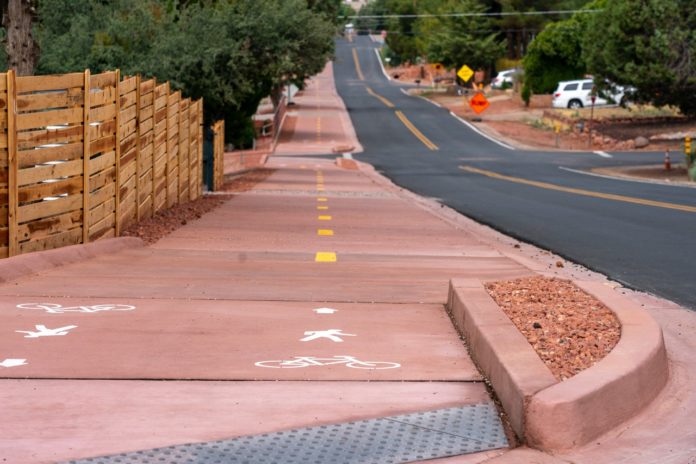Compared to most cities and towns during the pandemic, Sedona was an anomaly in the amount of sales and bed taxes brought in during that time. The city’s budget reflects that.
By a unanimous vote on Tuesday, July 13, council approved the tentative Fiscal Year 2021-22 budget in the amount of $71,692,843, 39.9% higher than last year’s budget of $51,214,284.
Of that new total, $62,692,843 are expenditures, while the remaining $9 million is a debt refunding budget from the wastewater fund.
The final budget is set to be approved Tuesday, Aug. 10. By law, once the tentative budget is approved, the city can decrease it before final approval but can’t increase it.
“Our revenues have come in much, much stronger than we had anticipated,” Finance Director Cherie Wright told council. “When we were doing the 2020-21 budget, we didn’t know how hard hit we were going to be by COVID-19. So, we budgeted sales and bed taxes pretty low. Our revenues have been substantially higher than that.”
The operating budget represents a $6.7 million, or 19% increase, from this past fiscal year, which ended June 30, a city report states. The most significant increases are in the Affordable Housing Fund of $1.6 million as well as $1.7 million for anticipated American Rescue Plan Act funding that is expected to be used for the affordable housing program.
Other significant increases include $900,000 for police operations and the resumption of additional payments toward the Public Safety Personnel Retirement System unfunded liability. An additional $700,000 is for implementation of the transit system, which will largely be covered by federal grant funding, and another $500,000 for expansion of the sustainability program, including a curbside yard waste program, and $400,000 for Public Works operations, including staffing for maintenance, traffic control coverage and project management.
The capital improvements budget represents a $4.8 million or 32% increase from FY 2020-21. The most significant increases are $2.9 million for traffic improvements and $1.9 million for acquisition of land for the strategic protection of the city’s future development.
Like any municipality, salaries and benefits make up one of the largest expenditures. For Sedona in Fiscal Year 2021-22, that amount is $15.9 million, which is up from $13.9 million the previous year. The increase is a result of 11 new full-time positions being added while two part-time positions were increased to full-time.
The expenditure budget of $62 million, a 22% increase over last year, is broken down as follows:
■ General fund: $23,379,000
■ Wastewater Fund: $12,789,000
■ Capital Improvements Fund: $11,005,000
■ Development Impact Fee Fund: $3,401,000
■ Public Transit Fund: $3,06,000
■ Affordable Housing Fund: $2,657,000
■ Grants and Donations Funds: $2,218,000
■ Streets Funds: $2,077,000
■ Information Technology Fund: $1,854,000
■ Art in Public Places Fund: $136,000
■ Transportation Sales Tax Fund: $116,000
So where is the money coming from?
City sales taxes account for $27,971,000, with bed taxes another $7,029,000 followed by $6,047,000 from wasterwater charges for service as the top three generators of funding.
In terms of the debt-refunding budget of $9 million, prior to the meeting Wright explained it in layman’s terms how that fund works. This amount in the budget represents the proceeds from a new replacement bond issue and $9 million in the budget for the refunding of the Series 2012 bonds. It’s an offsetting balance of money coming in and money going out.
“With interest rates being low right now, issuing new replacement bonds saves the city approximately $700,000 to $900,000 in interest payments on the Series 2012 bonds,” Wright said. “It’s sort of like refinancing a mortgage — you do it to lower your interest rate and pay less in interest. Due to closing costs and the interest rate environment, people typically do not refinance their mortgage every year. To take the analogy further, if you are refinancing a $500,000 mortgage, it’s like showing a revenue of $500,000 for the proceeds from the new mortgage and an expenditure of $500,000 to show the payoff of the old mortgage.”
In the end, she said while that $9 million is shown in the budget, it’s not as though the city can use that for any other use than its original intention. In this case, wastewater.






















